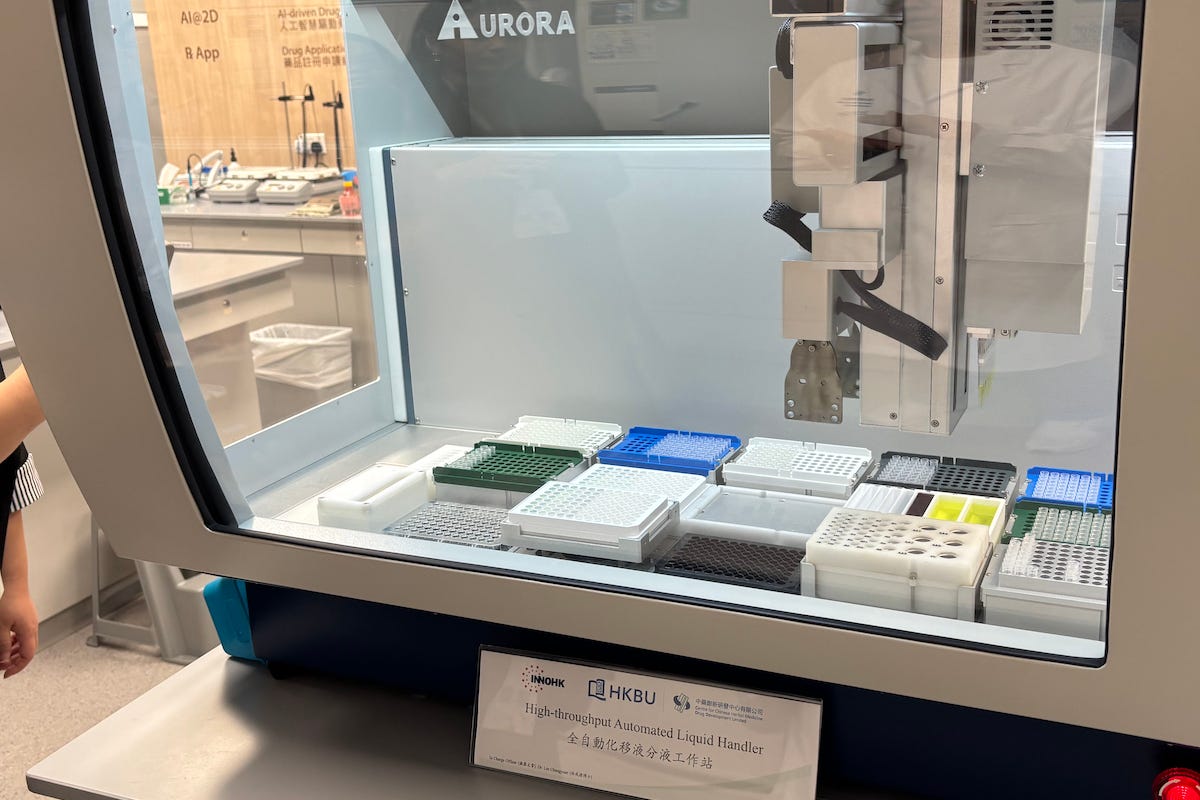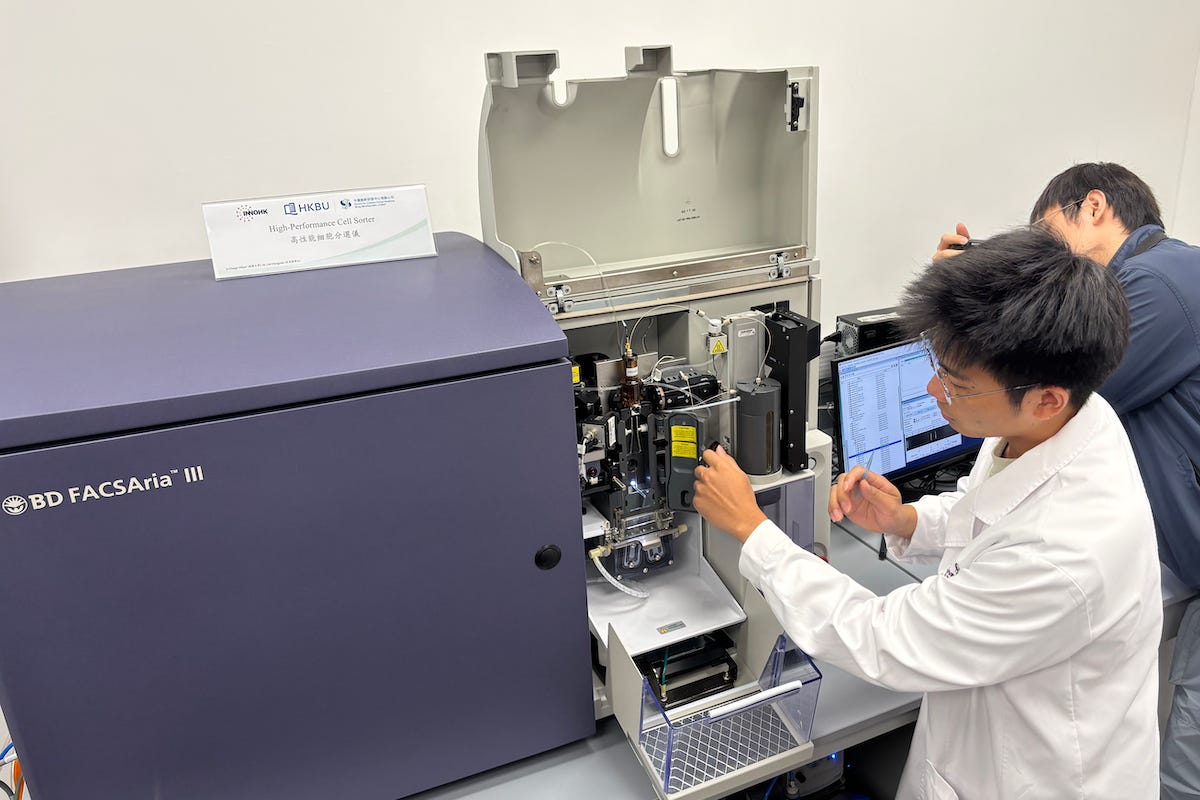AI-driven herbal drug research accelerates Hong Kong push for FDA approval
A Hong Kong research center deploys advanced analytics and automation to fast-track Chinese herbal medicines toward global regulatory acceptance

Hong Kong scientists are increasingly turning to artificial intelligence to modernise Chinese herbal medicine, using advanced analytics to identify active compounds, optimise multi-herb formulations, and predict drug targets with far greater speed than traditional approaches.
This shift marks the beginning of a new phase for botanical drug development—one in which data modelling and automation aim to reduce uncertainty and accelerate progress toward the sector’s most urgent milestone: securing approval for the first Chinese herbal drug in the United States.
Researchers at the Centre for Chinese Herbal Medicine Drug Development (CDD) say AI has become indispensable to their mission. By helping them refine traditional formulations into reproducible pharmaceutical candidates, the technology strengthens the regulatory foundations required for botanical drugs to enter highly controlled markets.
“We analyse the data of the patients who are treated by Chinese medicine, and then we use AI to optimise the formulation and identify potential drug targets,” said Professor Zhaoxiang Bian, Director of the CCD.
He added that algorithmic modelling has improved the team’s ability to evaluate multi-herb combinations, an essential requirement for submission to global regulators. He emphasized that the CCD views FDA progress as strategically critical.
“Data can tell the story,” he said. “We aim to develop effective, safe, and accelerated processes to benefit more patients.”
He noted that botanical drug development demands scientific justification for every component of a multi-herb formula, as well as strict batch-to-batch consistency.
“A single compound is not enough—these drugs are based on multiple components that work together,” he said.
Bian and his team said that the ability to win FDA approval would not only validate the scientific foundations of Chinese herbal medicine but also unlock international markets and attract long-term investment into botanical drug discovery.
Integrated R&D
On November 8, the CCD showcased its research during a media tour, part of the Hong Kong Laureate Forum (HKLF) held at Hong Kong Science Park. The facility is one of the biomedical research platforms under InnoHK, an initiative led by the Innovation and Technology Commission (ITC) to foster world-class R&D in Hong Kong.
During the tour, Bian explained how AI now drives the Center’s entire discovery pipeline. CDD operates a comprehensive “one-stop” system that integrates microbiome analytics, metabolomics, immunology, pharmacology, toxicology, and pharmacokinetics/pharmacodynamics. AI tools support these functions by modelling interactions between compounds, predicting biological responses, and identifying which parts of a formulation deliver the strongest clinical benefit.
Bian said development begins with clinical data rather than synthetic molecules.
“We focus on effective cases to pinpoint the indication,” he said, noting that analysts review how real patients respond to long-used formulations.
AI also accelerates formulation refinement by quickly comparing different herb combinations to identify which elements are essential. This process guided CDD’s candidate for constipation-predominant irritable bowel syndrome (IBS), where modelling showed that a four-herb formula produced superior outcomes compared with simplified versions.
The CDD applies computational tools to enhance quality control, a major regulatory requirement for botanical drugs. AI supports chemical profiling and stability assessment to ensure that each manufacturing batch maintains consistent levels of active components.
Drug Pipeline
CDD’s first five-year research phase advanced four drug candidates, each now identified by its official code:
CDD-2101 — Chronic constipation in Parkinson’s disease: A U.S. botanical drug application now undergoing clinical evaluation, following FDA acceptance of its investigational new drug (IND) filing.
CDD-2103 — Ulcerative colitis: A new drug application was approved by China’s National Medical Products Administration (NMPA) for enteric trials.
CDD-2105 — Constipation-predominant IBS: New drug applications submitted to both Chinese and U.S. regulators. Existing FDA-approved IBS drugs demonstrate only 25–50% efficacy, with frequent side effects.
CDD-2107 — BAG3-related myofibrillar myopathy: An orphan-drug-designated candidate being developed for a rare muscle-degeneration disorder that impairs gastrointestinal and respiratory function.
Bian said the CDD has been contacted by patients in more than a dozen countries seeking access to CDD-2107.
During a media briefing, a reporter from TechJournal.uk asked when CDD-2101 might be able to advance to a Phase 3 trial under the FDA’s oversight, a question Bian noted he is frequently pressed on by the Innovation and Technology Commission (ITC).
He explained that mid- to late‑stage botanical drug development remains one of the most challenging hurdles for the field.
He said regulators require extensive safety, efficacy, and stability data, and that Phase 2b outcomes must be especially strong before a Phase 3 trial can be authorized. These expectations are considerably higher for multi‑component formulations, making timelines difficult to predict.
Developed by other companies, several botanical-derived medicines have previously received FDA approval, providing useful reference points for the entire field:
Veregen (2006) — An ointment made from green tea catechins used to treat genital warts.
Crofelemer (2012) — A therapeutic extract from the sap of the Croton lechleri tree, approved for HIV‑associated diarrhoea.
Camptothecin derivatives (1996) — Irinotecan and topotecan, both anti-cancer drugs originating from the Chinese happy tree.
Research Potential
Researchers see considerable opportunity for Chinese herbal medicine in modern drug discovery. The field benefits from a long clinical history, with real-world evidence indicating which formulations may address chronic or multi-factorial conditions such as IBS, ulcerative colitis, and cancer cachexia.
New technologies—including AI modelling, high-resolution mass spectrometry, microbiome sequencing, and systems immunology—make it possible to understand herbal mechanisms at a molecular level.
Interest in complementary therapies is also growing in global markets, particularly among ageing populations. Meanwhile, international collaborations—spanning Chicago, Macau, Beijing, and resource-rich provinces such as Jiangxi—expand CDD’s access to scientific expertise and herbal materials.
“We welcome all collaborations,” Bian said.
Future Outlook
As CDD prepares for its second five-year research phase, Bian said the priority is completing critical mid-stage clinical trials, especially Phase 2b evaluations. These trials will determine whether candidates can advance into larger, more costly Phase 3 programs.
“If we get very good results in patients, we have higher confidence,” he said.
The Center is also converting traditional herbal decoctions into pharmaceutical-grade tablets and capsules, pairing modern extraction and stabilization techniques with centuries-old clinical knowledge. AI remains central to dose optimisation, chemical analysis, and regulatory preparation.
Bian is a specialist in digestive diseases, clinical trial methodology, and gut dysbiosis, and serves as Associate Vice-President at Hong Kong Baptist University. He has published extensively on Chinese medicine research. His long-term goal is to position Hong Kong as a global center of excellence for botanical drug development.
CDD’s work now moves toward its next round of clinical milestones, which will determine how its candidates progress through global regulatory pathways.





